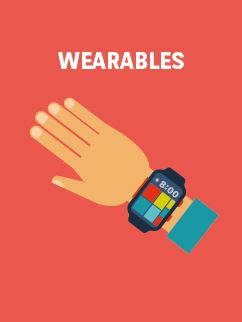Healthcare and new technologies : financing one’s equipment with the usage economy
Financing healthcare or how the usage economy facilitates the access to new technologies to meet the challenges facing the sector?
Financing healthcare or how the usage economy facilitates the access to new technologies to meet the challenges facing the sector?
The healthcare industry is under pressureMedical staff and skills are in short supply, budgets are getting tighter, and patients’ expectations are changing. At the same time demand for services is increasing and the cost of healthcare – both to deliver and receive – is going up.According to the Economist Intelligence Unit, global healthcare expenditure will reach $8.7 trillion by 2020, up from $7 trillion in 2015.Healthcare providers need to contain these rising costs, while simultaneously improving their service delivery.New technologies have the potential to improve how healthcare is delivered.However, these innovations are not always immediately affordable. For the increasingly cost-conscious healthcare provider, leasing presents an alternative method that ensures cost effective access to the latest and best healthcare technologies – without a significant upfront investment.

Ariane Govignon
Head of the Healthcare Market
BNP Paribas Leasing Solutions

Artificial intelligence (IA)
AI and big data analytics are beginning to manage a variety of tasks in healthcare. Repetitive administrative jobs like payment and appointment reminders are increasingly automated. Virtual assistants or bots can even create detailed reports and treatment analyses, as well as schedule appointments. It’s a far more efficient approach to time-consuming tasks which saves time and money in the long-run. More impressively, AI and data analytics are also being used in the fields of drug testing and development, precision medicine and diagnosis.
Research from OpenText shows that one in four patients believe their doctor would establish a more accurate medical diagnosis using AI. This will make significant contributions to the development of technology to improve the healthcare sector.

Wearables
Fitbits are a popular and widely available example of wearable healthtech. People use them for general health oversight: data-points monitor various things like heart rate, sleep quality and exercise regimes. More specialised wearable health devices are also available such as Withings Wireless Blood Pressure Monitor and the Rapael Smart Glove for people with neurological and muscle injuries.
Essentially, people can now monitor their vital signs and bodily functions at home – there is no need to visit the hospital or GP for regular check-ups. With nursing skills already in short supply, this frees up healthcare resources to focus on more urgent medical needs. The potential in the wearable technology market is huge: CSS Insight predicts that it will be worth $34 billion by 2020.

Virtual Reality (VR) and augmented reality (AR)
VR and AR serve several important functions in the healthcare sector. They can improve the teaching and learning experience for medical students, providing immersive practice scenarios to enhance skills. VR and AR experiences can also help relax patients or provide them with physiotherapy support, almost like an exercise video but far more ‘real’. AR-based apps may soon transform how people search and find their nearest defibrillator and emergency care units. Surgeons will also be able to play-out or visualise each step of a challenging operation before scrubbing up. This could potentially reduce in-theatre time per operation, keeping costs lower and freeing up resources. The developments are exciting and Fast Company has estimated that VR and AR markets will soon be worth a combined $150 billion.

Internet of Things (IoT)
IoT isn’t widespread in healthcare yet, but it does hold massive potential. Healthtech developers are investigating how connecting. and integrating different medical equipment with hospital databases and patient management software can improve service delivery, diagnosis, inventory management and treatment. Devices such as connected inhalers and insulin trackers, for example, will allow doctors to record their patients’ adherence to treatment – and can motivate and remind patients to take their medicine via a mobile app.
Elderly patients, as well as those managing chronic diseases, can monitor their health needs in the comfort of their own homes. Doctors can stay alert to their patients’ conditions, and still have time to attend to other areas such as medical research, walk-in patients and surgeries.
Bain has predicted that by 2020, annual revenues for IoT vendors selling interconnected hardware, software and comprehensive solutions could exceed $470 billion.

Impression 3D
3D printing has been around for some time, but has remained a relatively expensive technology. Now, thanks to falling costs, 3D printing solutions have become more accessible to healthcare providers. This has led to a number of breakthroughs like 3D-printed skin for burn victims, airway splints, live tissue with blood vessels, drugs, and various types of medical equipment.
3D printing can improve access to important medical supplies at reduced cost. Many more lives can be helped, or even saved, without costing patients and providers a fortune. Advancements are becoming increasingly sophisticated and Gartner predicts that by 2021, 25% of surgeons will practice on 3D-printed models of the patient prior to surgery. Frost & Sullivan predict that the 3D printing market in the healthcare sector will be worth $6 billion by 2025.
There are a variety of different leasing solutions available, and each can be structured differently to match specific needs, be they budget related or expected usage.
These solutions can include additional services such as pay-per-scan, managed equipment service and maintenance.
Crucially, these solutions take care of the asset at the end-of-life stage, and ensure that all recycling and safe disposal methods are not the customer’s responsibility.
ADVANTAGES OF RENTAL:
> Ability to spread costs and budget more effectively with predictable, manageable costs. More resources can therefore be spent on improvements in other critical areas.
> Greater flexibility thanks to a variety of finance options: assets can either be purchased over time, or simply hired for a desired period.
> Stay current with the latest and most efficient equipment: rather than being stuck with obsolete, out-dated equipment, healthcare providers can easily upgrade their assets at the end of their leasing contract.
> Maintenance costs and other value-add services can be included in a repayment plan.
> Tax efficiency: rental payments count as a business expense.
OUR SOLUTIONS
Our range of solutions, MEDIFORCE, available in France for now, can answer the needs of healthcare professionals. We help them grow their business with rental and finance solutions that can offer to their end customers.
OUR SOLUTIONS
In France, we offer, via CMV Médiforce, rental and finance solutions for all the equipment of healthcare professionals. Visit our dedicated website to perform an online simulation or contact us directly.